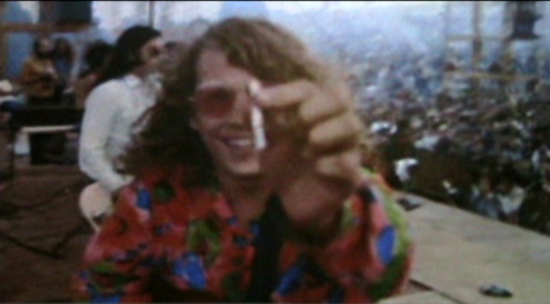
What is "raga rock"? Basically raga rock is a broad term used to describe any rock with South Asian influence. This new genre became popular in the mid-60's. The very first songs to be known as raga rock were "Heart Full Of Soul" by The Yardbirds, and "See My Friends" by The Kinks. Upon listening to them, the trance-like quality of the guitar becomes obvious. These sounds were produced to sound like a sitar, a very popular Indian instrument. However, even after these great, groundbreaking songs were released, the genre was still not popular. Two songs by The Beatles, "Norwegian Wood" and "Love You To" popularized the genre. Not only did they have a huge South-Asian influence, but they also used the traditional instruments.
George Harrison's newly acquired love of the sitar influenced many raga rock musicians and songs. The above picture is him playing his sitar. The sitar has a very distinctive sound. It is a psychedelic droning sound. Harrison learned to control this sound from the master of sitar: Ravi Shankar. Ravi Shankar was a classical Indian musician. One that had complete mastery and control over this 23-stringed instrument. One who is familiar with The Beatles' discography knows that many of Harrison's songs had very strong use of sitar, thanks to Mr. Ravi Shankar, whom is 88 years old and still performing.
One of the most famous raga rock songs was "Paint It Black" by the Rolling Stones. Brian Jones was the one who wrote the famous sitar riff. Who influence him to write this riff? George Harrison, of course. After a visit with George Harrison, he decided to take up the sitar. He taught himself how to play, and eventually wrote the great riff for this song. It was certainly a great song for both the raga rock and psychedelic rock scenes, which seemed to go hand-in-hand.
The raga rock scene peaked at the same time as the psychedelic scene, in the mid-to-late 60's. It lost it's huge popularity at the same time as the psychedelic scene, which was the late-60's and early 70's. This just goes to show that the psychedelic scene and the raga rock scene were very similar. This is why Ravi Shankar stopped playing festivals in the U.S for awhile after Woodstock. The psychedelic scene was known for blatant substance use and this substance use was also being associated with raga rock. Although Ravi Shankar did not play raga rock, many associated his classical music with it. He did not want to have any part in drug culture.
Here are some famous raga rock songs that I mentioned:
The Yardbirds - "Heart Full of Soul"
http://www.youtube.com/watch?v=f9mQkFpkShg
The Kinks - "See My Friends"
http://www.youtube.com/watch?v=S2Al7u0cKRk
The Beatles - "Norwegian Wood (This Bird Has Flown)"
http://www.youtube.com/watch?v=kar0pIIjK9U
The Rolling Stones - "Paint It Black"
http://www.youtube.com/watch?v=JjoeLpVCNr0&feature=related
George Harrison's sitar lesson with Ravi Shankar:
http://www.youtube.com/watch?v=erLZ-zW9Ti4






